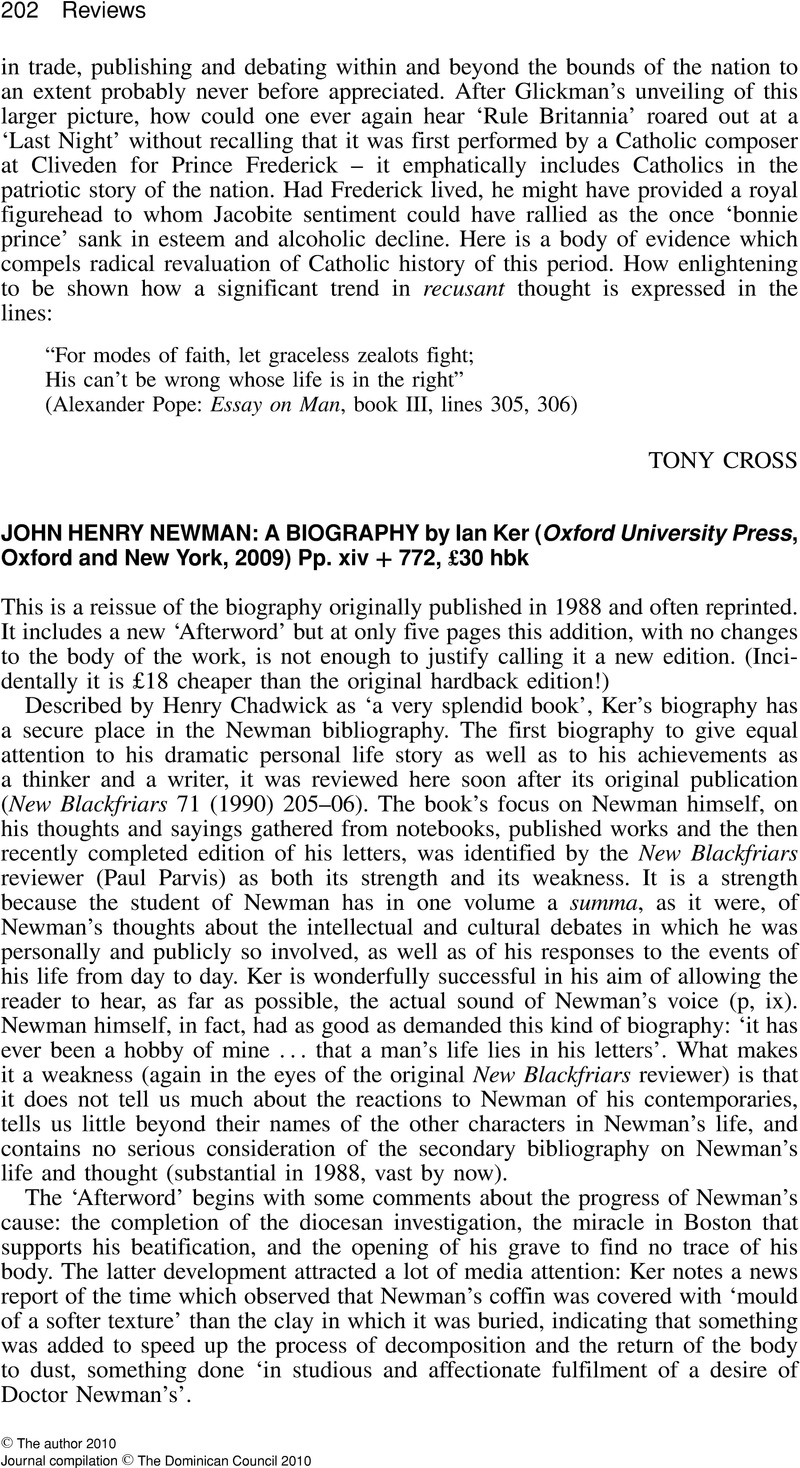No CrossRef data available.
Article contents
John Henry Newman: A Biography by Ian Ker (Oxford University Press, Oxford and New York, 2009) Pp. xiv + 772, £30 hbk
Review products
John Henry Newman: A Biography by Ian Ker (Oxford University Press, Oxford and New York, 2009) Pp. xiv + 772, £30 hbk
Published online by Cambridge University Press: 01 January 2024
Abstract
An abstract is not available for this content so a preview has been provided. Please use the Get access link above for information on how to access this content.

- Type
- Reviews
- Information
- New Blackfriars , Volume 91 , Issue 1032: Special Issue: Catholic Theological Association 2009 Conference Papers: The Legacy of Paul , March 2010 , pp. 202 - 203
- Copyright
- Copyright © The author 2010. Journal compilation © The Dominican Council 2010


